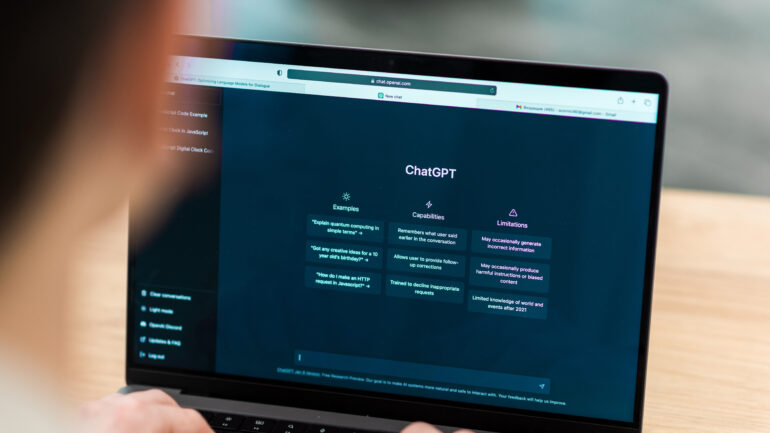Uncovering Cognitive Biases: Numbers don’t Lie, But People Selecting Them Do

With the rapid advancement of data science, scientists working in this field need to develop a deep understanding of biases, inherent in our own thinking. These biases tend to permeate into the systems, processes, and algorithms we are creating every day. As our reliance on artificial intelligence-powered systems becomes overwhelming, the ability to apply the First Principle of Thinking, that challenges all assumptions becomes paramount as otherwise we will be misled by our own preconceptions. The ability to identify and address cognitive biases has become a must-have skill in data science.
At its core, First Principles Thinking is about breaking down complex concepts, problems or beliefs into their fundamental components. Rather than relying on analogy, precedent, current methods or conventional wisdom, it encourages us to dive deep into the essence of a problem (“the real problem”), free from bias or preconceived notions. By breaking down a problem into its fundamental elements, we can take a fresh perspective and innovate from the ground up – element by element.
If we analyse the reports, surveys, research outputs of global organizations which we often accept as gospel, we find such inherent biases, or subtle cues that are carefully embedded to influence our thinking. Wall Street’s thought leadership doesn’t just explain the world—it frames it. JPMorgan Chase, BlackRock, Goldman Sachs and Morgan Stanley don’t merely analyze trends; they actively shape perceptions in ways that reinforce their dominance. In a shocking revelation in 2020, Marko Kolanovic, head of macro quantitative and derivatives strategy at JPMorgan, accused researchers across the bank’s trading desks of tying their calls to political biases.
Early this year, the European Central Bank has warned banks against submitting “overly optimistic” projections as part of its biannual EU-wide stress test for the sector, which commences this week. In the test, officially launched by the ECB on Monday, 96 banks are asked for their projections on the impact of two scenarios — one “baseline” and one “adverse” — on their capital positions.
The articles, surveys, research reports and white papers published by global bankers drip with the confidence of experts, yet they consistently advance a worldview that benefits financial elites while dismissing or downplaying alternative perspectives. While acknowledging that some of these reports are invaluable in their depth of research, readers must, at the same time. be aware of the driving forces behind these publications.
In a research paper “CEO overconfidence and financial crisis: Evidence from bank lending and leverage,” the authors Po-Hsin Ho, Chia-Wei Huang, Chih-Yung Lin, Ju-Fang Yen, find that over a period that includes the 1998 Russian crisis and 2007–2009 financial crisis, banks with overconfident chief executive officers (CEOs) were more likely to weaken lending standards and increase leverage than other banks in advance of a crisis, making them more vulnerable to the shock of the crisis. During crisis years, they generally experienced more increases in loan defaults, greater drops in operating and stock return performance, greater increases in expected default probability, and higher likelihood of CEO turnover or failure than other banks. CEO overconfidence thus can explain the cross-sectional heterogeneity in risk-taking behaviour among banks. The then US Federal Reserve Chairman Alan Greenspan had cautioned against “an overly optimistic assessment of borrower prospects during a credit boom.”
Organizations such as the World Economic Forum (WEF), Gartner, Forrester, Sequoia Capital, BlackRock, Morgan Stanley, JPMorgan Chase, and the Harvard Business Review (HBR) wield significant influence over global policies and public discourse. However, their analyses and recommendations are shaped by institutional biases tied to their funding, clientele, and ideological leanings.
Reports produced by some of these organizations aggressively advocate the adoption of technology, highlighting the benefits, while underplaying the job displacement and the accompanying economic distress it creates in its wake. Digital inequality is buried under an avalanche of technological hyperbole. The WEF’s agenda influences the UN Sustainable Development Goals (SDGs), steering climate action toward market-driven solutions like carbon trading rather than regulatory caps on emissions.
Commenting on the technology hype cycles, author of the best-seller Own the AI Revolution and IBM Master Inventor, Neil Sahota regretfully observed that: “Organizations feel compelled to adopt technologies prematurely, risking wasted capital and public trust.” Gartner’s annual Hype Cycle for Emerging Technologies has consistently inflated expectations around blockchain and AI. In 2021, it placed “NFTs” and “metaverse” at peak hype, prompting corporations and governments to allocate resources despite limited use cases.
What we need to remember is that three important elements – a high degree of technological reliability, economics of scale and maturity of business use-cases – must converge for a technology to deliver the promised business outcomes. It is this absence of use-case maturity like augmented/virtual reality, autonomous vehicles, remote surgery, etc, that was largely responsible for below-expected penetration of 5G technologies.
In a research paper titled “5G is not just another G: A review of the 5G business model and ecosystem challenges” authorsMattia Magnaghi, Antonio Ghezzi and Andrea Rangone attributes this promise vs. performance gap to what they call the “digitalisation paradox.” This paradox highlights how companies make significant investments in digital technologies, such as 5G, but struggle to achieve the expected outcomes in terms of adoption and revenues.
Global banks are frequently found to prioritize policies that safeguard financial markets, often opposing progressive taxation and advocating for deregulation. For instance, these banks urge governments with advices such as “Corporate tax cuts stimulate GDP growth,” while ignoring OECD findings that inequality worsens post-tax cuts. Similarly, JPMorgan’s economic research consistently supports low interest rates, benefiting its trading divisions.
The Impact: Their analyses inform central bank policies, contributing to loose monetary policy post-2008, which fuelled asset bubbles. Critics link this to rising wealth gaps, as seen in the U.S., where the top 10% hold 89% of stocks. The thought leadership, we value so much, is never neutral. It’s a product of their incentives, their clientele, and their role in preserving a financial system that has made them some of the most powerful institutions on earth. Numbers don’t lie—but the people selecting them do. The players that influence our thinking excel at presenting data that supports their narratives while ignoring what doesn’t.


